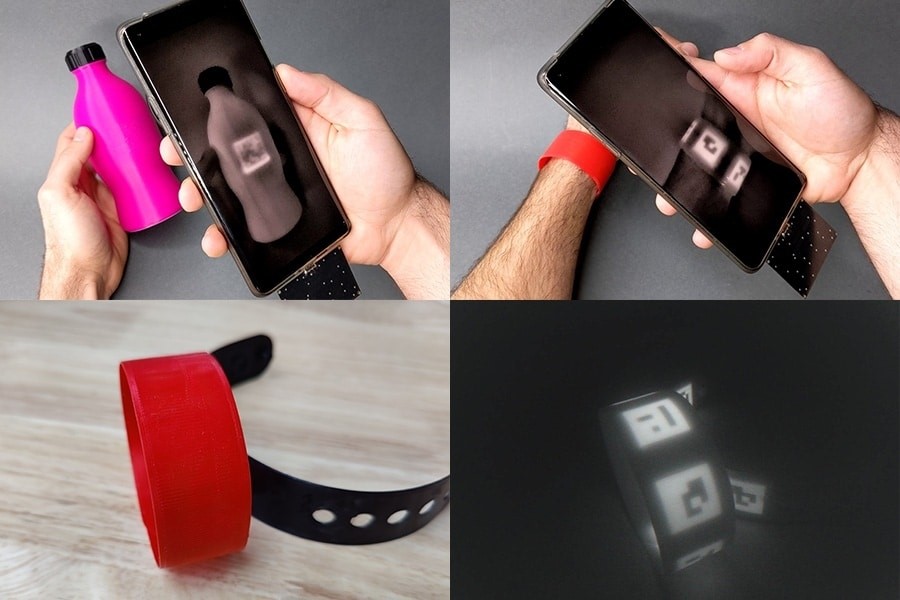Elevated 3D Object Tracking Through Invisible Tagging – Revolutionizing Interactions in the Physical and Digital Realms
Introduction
In our rapidly evolving world, the intersection of physical and digital environments demands robust solutions that seamlessly connect objects with their digital counterparts. Traditional QR codes, although prevalent, are susceptible to manipulation and data theft. MIT scientists have now unveiled a groundbreaking solution – Bright Markers, an invisible tagging system embedded in 3D-printed objects. This innovation is poised to enhance motion tracking, virtual reality experiences, and object detection, offering a new dimension to the way we interact with technology.
The Need for Invisible Tagging
The ubiquity of QR codes in everyday life is undeniable, from grocery coupons to museum exhibits. However, their vulnerability to tampering poses a significant risk. Bright Markers, developed by MIT’s Computer Science and Artificial Intelligence Laboratory (CSAIL), address these concerns by providing an invisible and tamper-proof alternative. These fluorescent markers, hidden within 3D-printed objects, offer a secure link between physical and digital realms.
Unveiling Bright Markers: A Seamless Integration
To create a Bright Marker, users can employ CSAIL’s software plugin in 3D Modeling programs like Blender. The tag is strategically placed within the object’s design, and the resulting Standard Triangle Language (STL) file is ready for 3D printing. The fluorescent filaments in the printer create an invisible tag, like an unseen QR code. It is crucial to embed the markers during the fabrication process, ensuring a seamless integration that preserves the object’s characteristics.
Fluorescent Technology and Detection Mechanisms
Bright Markers utilize fluorescent materials that emit specific near-infrared light, visible in high contrast through infrared cameras. The researchers have developed two hardware setups for detection – one for smartphones and another for AR/VR headsets. These setups resemble glowing QR codes, yet they are invisible to the naked eye. This invisibility ensures non-disruptive integration, maintaining the object’s original appearance and function while providing enhanced user interaction.
Applications Across Industries
The potential applications of Bright Markers span various industries. In the supply chain, manufacturers can scan tags to gather metadata about a product’s origin and movements. Consumers, on the other hand, can verify ethical sourcing and recycling information by checking a product’s digital signature. The technology also finds utility in motion tracking for wearables, offering precise limb movement monitoring. Additionally, in virtual reality settings, Bright Markers introduce a new level of interaction, enabling in-game tools and immersive experiences.
Bright Markers in Action
The system has already demonstrated promising results in virtual reality scenarios. For instance, a toy lightsabre with an embedded Bright Marker can become an in-game tool, allowing users to slice through virtual environments. This level of interaction is made possible by the tag-detecting hardware, offering a glimpse into the potential of Bright Markers in shaping the future of augmented and virtual reality experiences.
Beyond Infrared Tags and Air Tags
MIT’s team has a history of innovation in this space, previously developing Infrared Tags. While their earlier project was limited to black objects, Bright Markers offer a spectrum of color. The fluorescent materials overcome the blurriness associated with traditional markers, providing efficient real-time tracking, even during motion. In comparison to Apple’s Air Tags, Bright Markers stand out as low-cost and low-energy alternatives.
Challenges and Future Enhancements
Though Bright Markers exhibit great promise, there are limitations. Tags cannot be added to objects post-fabrication, and obstacles like hands may hinder tracking. The team suggests combining the technology with magnetic filaments to enhance detection. Higher fluorochrome concentrations in filaments could further improve marker spotting. These challenges, however, are opportunities for refinement and evolution.
Industry Perspectives
Experts from Accenture Labs and Google acknowledge the potential of Bright Markers in product tracking, authentication, and immersive technologies. The technology simplifies computer vision needs, aiding devices in identifying interactable objects. As we move towards a future dominated by AR and VR, Bright Markers mark the beginning of a transformative journey.
Conclusion: Envisioning a Seamless Integration
As MIT CSAIL and Department of Electrical Engineering and Computer Science PhD candidate Mustafa Doğa Doğan notes, “Bright Marker holds tremendous promise in reshaping our real-life interactions with technology.” The vision extends from retail experiences to industrial settings, promising effortless interactions between physical and digital realms. Bright Markers have the potential to become seamlessly integrated into everyday objects, offering a myriad of possibilities for enhanced user experiences.
In conclusion, the development of Bright Markers represents a significant leap forward in the quest for secure and efficient connections between physical and digital environments. As technology continues to evolve, we can anticipate a world where invisible tagging becomes an integral part of our everyday lives, revolutionizing the way we interact with the objects around us. The journey has just begun, and Bright Markers stand at the forefront of this exciting technological evolution.
Source

